Keep your eyes open at this time of year to spot these kind of webs in trees. They are the work of Fall Webworms (Hyphantria cunea), which are the larval stage of the Fall Webworm moth.
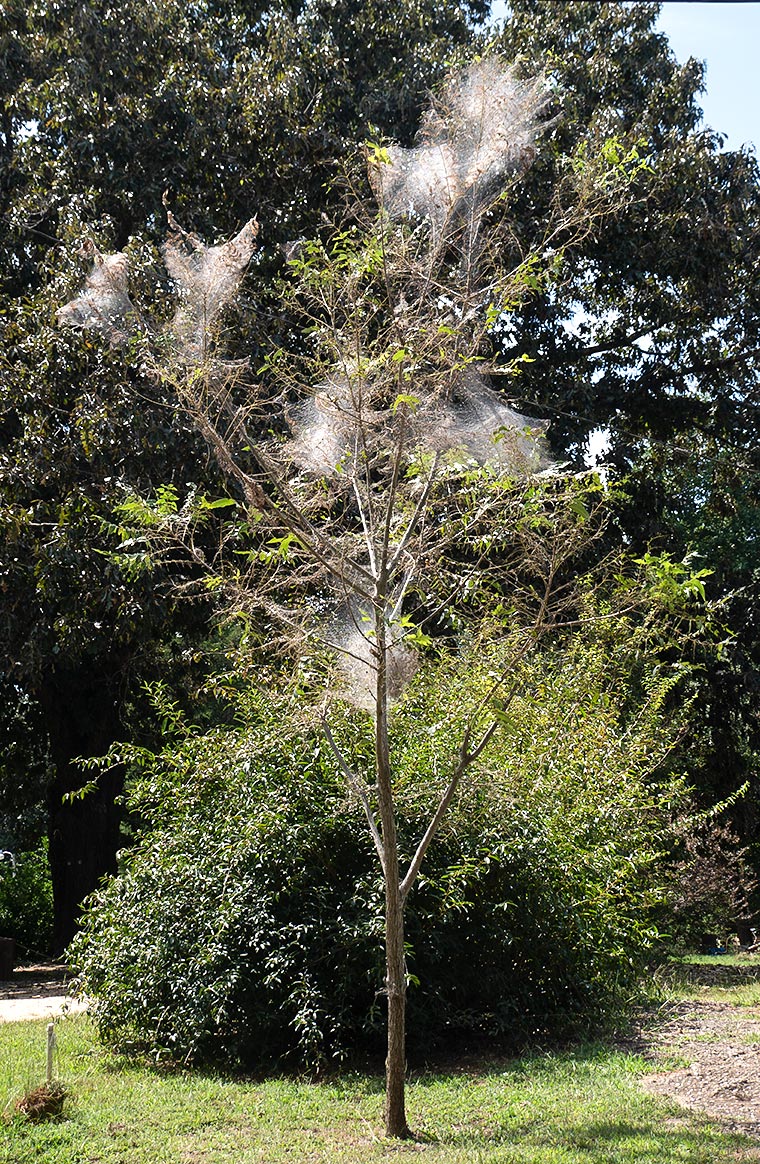
The photograph above shows a young Pecan tree (Carya illinoinensis) that is heavily infested.
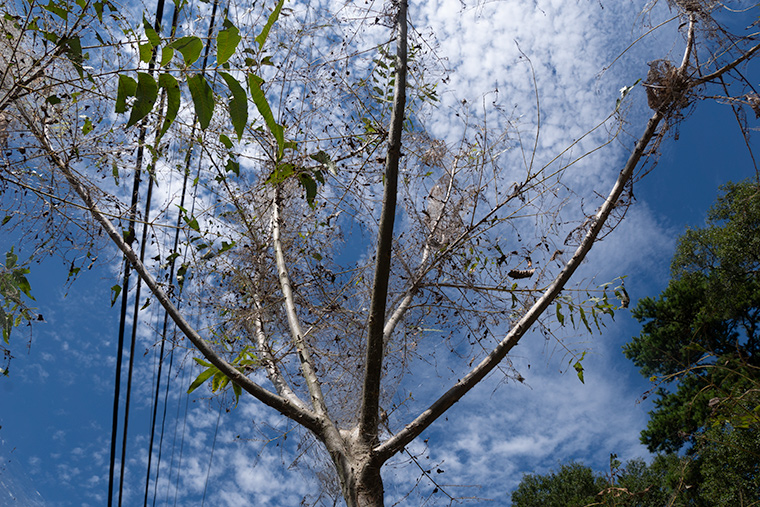
A view up through the Pecan tree shows how thoroughly defoliated it has become. Fall Webworms are not normally a problem in a forest setting, but, as you can see, they can be a major pest in a garden setting.
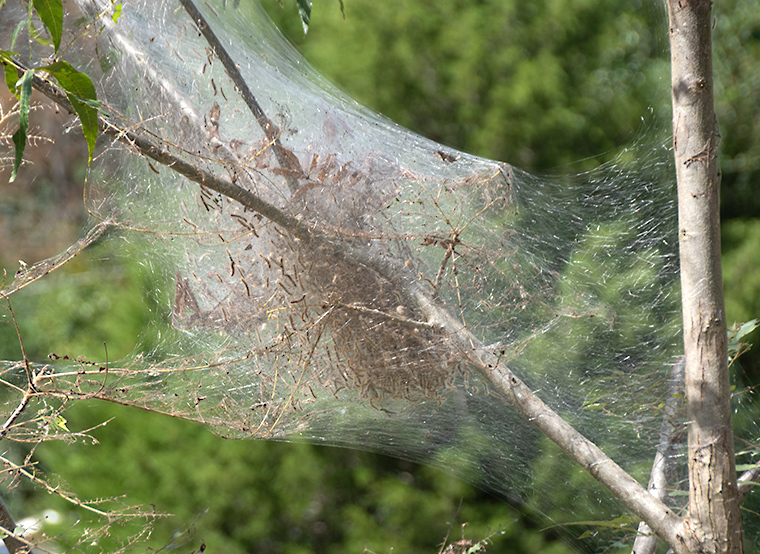
A closer look at one of the webs shows its sturdy construction, and, if you look carefully, you can see that the web contains a lot of Webworms.
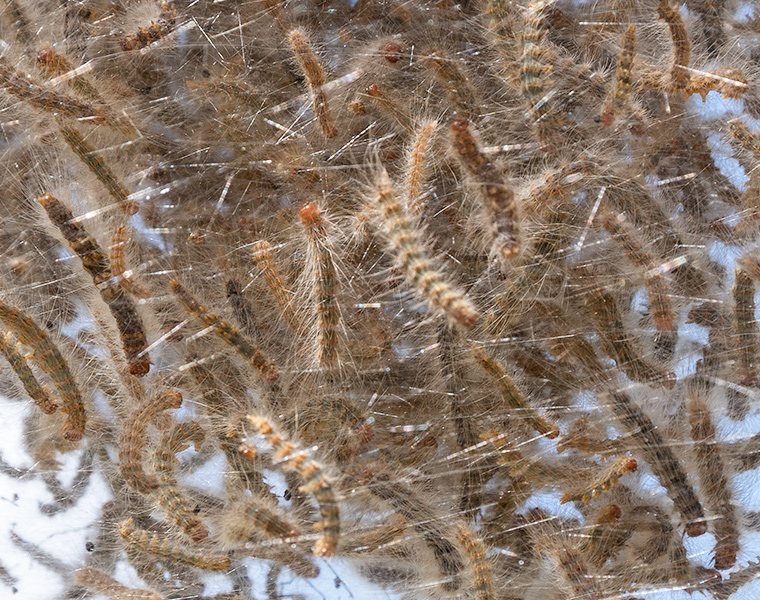
A closer view shows that the worms can be closely packed. They are also covered with hairs. The one closest to the camera shows its red head.
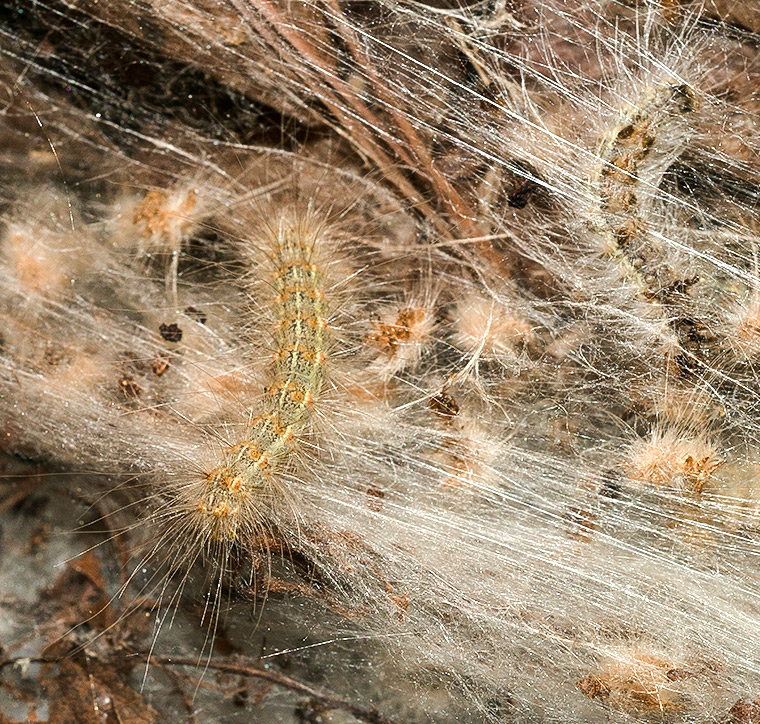
Here I have teased one of the caterpillars out onto the surface of the web.
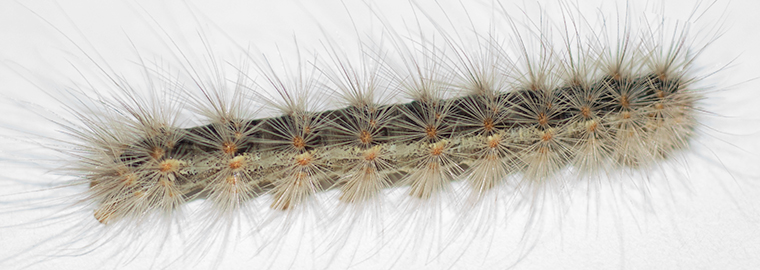
The hairs on this worm isolated from its web, are quite impressive.
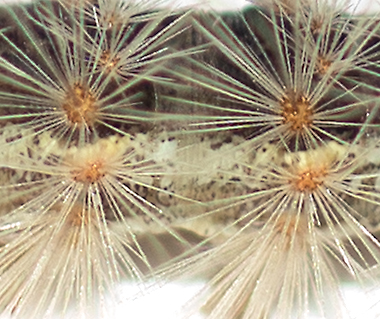
The hairs arise in an interesting pattern.
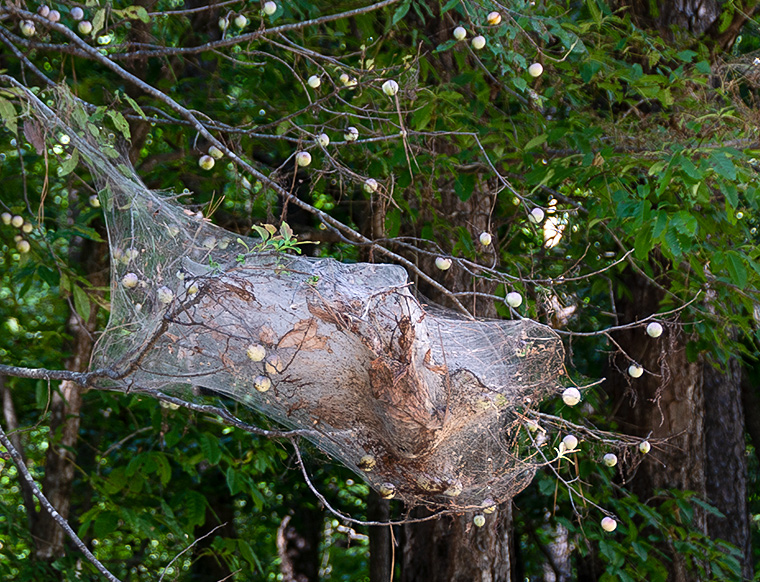
Many trees species can be infested. Here are some webs in a Persimmon tree (Diospyorus virginiana), which shows the still unripe persimmons. Note the overall messy look of the web. Fall Webworms construct their web around a branch that has leaves. Then they stay inside the web and eat the enclosed leaves. This differentiates them from Tent Caterpillars (Malacosoma americanum), which do not typically include leaves in their webs. Tent Caterpillars march outside their web at night to eat, then return for protection against predators during the daylight hours. See my earlier post for more information about Tent Caterpillars.
When Fall Webworms have consumed all the leaves that were enclosed in the web, they crawl out and construct another web. So some of the webs you find will be empty, as the worms have moved on. When the worms are mature, they pupate, typically in cracks in tree bark or stones, fallen leaves or other debris on the ground. Pupae overwinter after only one generation in the northern parts of their range and the moths emerge the following spring. In the southern parts of their range, Fall Webworms may go through several generations before they finally pupate for the winter.
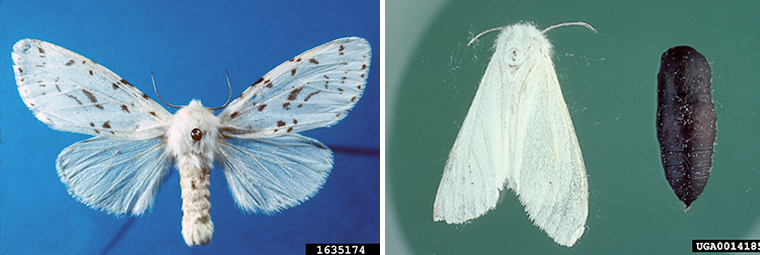
I have not been lucky enough yet to find a moth or a pupa worthy of a photograph. The two images above are courtesy of Bugwood.org. Two variants of the moth are known, one spotted and one pure white. The pupa, shown on the far right, is always black.
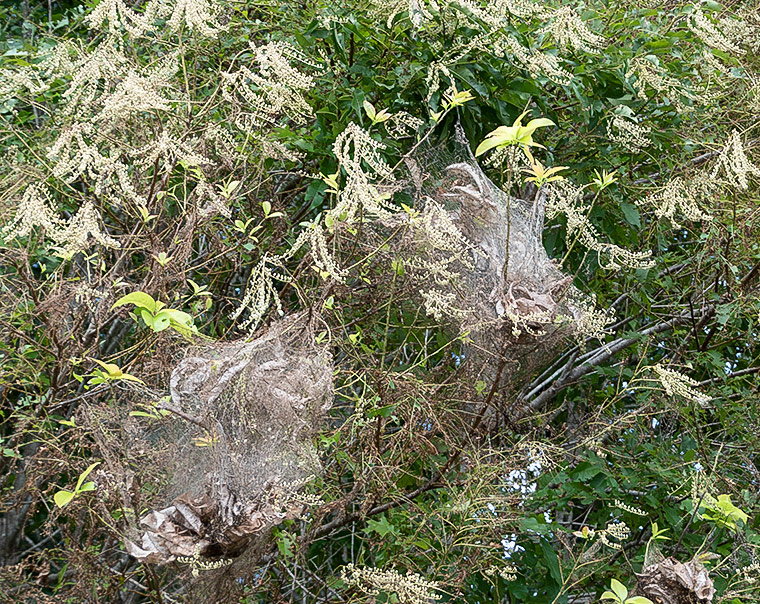
Sourwood trees (Oxydendrum arboreum) are also attacked. In fact, Fall Webworms are known to infest more than 400 tree species worldwide. Fall Webworms are native to the U. S., Southern Canada, and Northern Mexico. They were accidentally introduced to Europe and Asia where they have become a troublesome pest. Around our location, the favorite host trees seem to be Pecan and Persimmon. Remember, however, that it is not the caterpillars themselves that made the choice to eat Sourwood leaves, for example. It was the parent female moth that selected where to lay her eggs, and thus which host tree would be infested.
Discover more from A Naturalist's Journal
Subscribe to get the latest posts to your email.

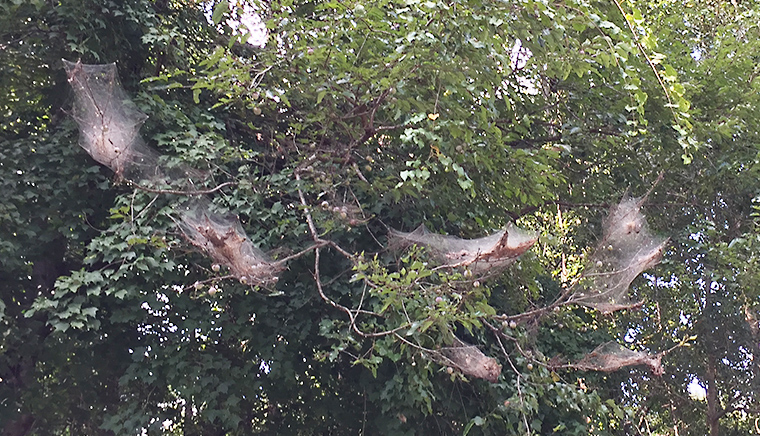
Thanks! Always wondered about these things.